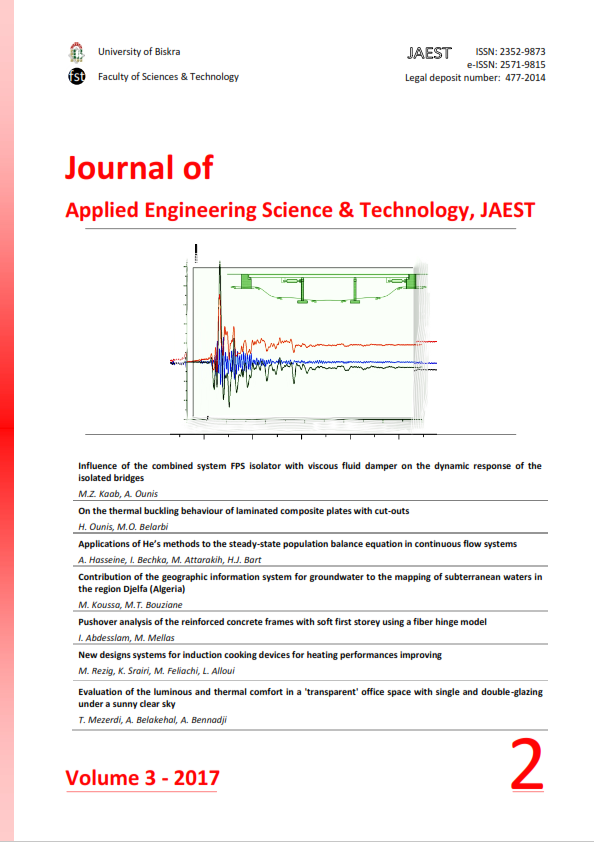On the thermal buckling behaviour of laminated composite plates with cut-outs
DOI:
https://doi.org/10.69717/jaest.v3.i2.58Keywords:
Laminated plates, Thermal buckling, Cut-outs, Finite element methodAbstract
In this work, the thermal buckling behaviour of laminated plates with rectangular cut-outs is studied using the finite element method. Based upon the classical plate theory, the used finite element is a combination of a linear isoparametric membrane element and a high precision rectangular Hermitian element. After validating the results obtained by the finite element, a parametric study is made using three types of materials commonly used in the industry, namely: the T300/5208 Graphite/Epoxy, the AS4/3501-6 Graphite/Epoxy and the E-glass/Epoxy. The study was about the effect of the size of the cut-outs, the boundary conditions, the stacking sequence and the stress resultants distribution on the critical buckling temperature. The study showed that the critical buckling temperature is strongly affected by the discussed parameters.
Downloads
Downloads
Published
Issue
Section
License

This work is licensed under a Creative Commons Attribution-NonCommercial 4.0 International License.













